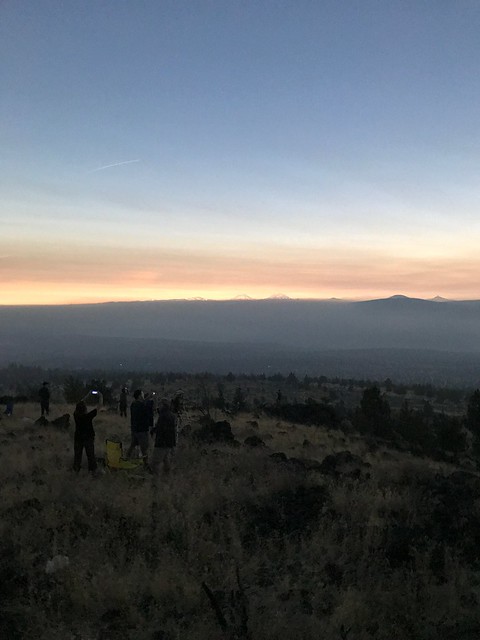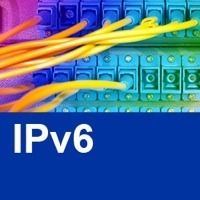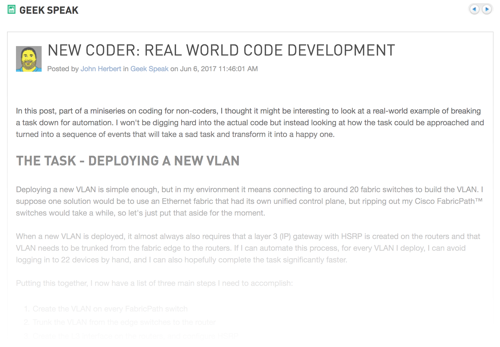Evidence at the cost of trust: The trouble with the Department of Justice – DreamHost case

The social and economic benefits of the Internet cannot be realized without users’ ability to communicate and organize privately, and, where appropriate, anonymously. Data collection warrants must strike a balance to protect these benefits without impeding law enforcement’s ability to enforce the law. In recent weeks, the United States Department of Justice’s (DoJ) conflict with DreamHost, a website hosting service, has underscored the importance of this balance.
Stuff The Internet Says On Scalability For August 25th, 2017
Hey, it's HighScalability time:

View of the total solar eclipse from a hill top near Madras Oregon, August 21, 2017. As totality approaches, dragons gorge on sun flesh; darkness cleaves the day; a chill chases away the heat; all becomes still. Contact made! Diamonds glitter; beads sparkle; shadow band snakes slither across pale dust; moon shadow races across the valley, devouring all in wonder. Inside a circle of standing stones, obsidian knives slash and stab. Sacrifices offered, dragons take flight. In awe we behold the returning of the light.
- ~5: ethereum transactions per second; 29+M: Snapchat news viewers; 100K: largest Mastodon instance; 2x: Alibaba's cloud base growth; 1B: trees planted by a province in Pakistan; 90.07%: automated decoding of honey bee waggle dances; $86.4B: Worldwide Information Security Spending; 1200: db migrations from Mysql to Postgres; $7B: Netflix content spend (most not original); 13%: increased productivity by making vacation mandatory; 75%: US teens use iPhones; 30,000x: energy use for Bitcoin transaction compared to Visa; ~1 trillion: observations processed for Gaia mission; 50% Continue reading
VMware Scores ‘Huge Win’ with Vodafone for NFV
 It's VMware's largest-ever telco deal.
It's VMware's largest-ever telco deal.
RFC 8215: Local-Use IPv4/IPv6 Translation Prefix published
 RFC 8215 “Local-Use IPv4/IPv6 Translation Prefix” was recently published, reserving the IPv6 prefix 64:ff9b:1::/48 for local use within domains enabling IPv4/IPv6 translation mechanisms.
RFC 8215 “Local-Use IPv4/IPv6 Translation Prefix” was recently published, reserving the IPv6 prefix 64:ff9b:1::/48 for local use within domains enabling IPv4/IPv6 translation mechanisms.
This allows the coexistence of multiple IPv4/IPv6 translation mechanisms in the same network, without requiring the use of a Network-Specific Prefix assigned from an allocated global unicast address space.
The well-known prefix 64:ff9b::/96 was originally reserved by RFC6052 for IPv4/IPv6 translation, but several new translation mechanisms such as those in RFCs 6146 and 7915 have subsequently been defined that target different use cases. It’s therefore possible that a network operator may wish to make use of several of these simultaneously, hence why a larger address space has been defined to accommodate this.
The shortest translation prefix being deployed in a live network was observed as being a /64, hence /48 was chosen as being on a 16-bit boundary whilst being able to accommodate multiple instances of /64.
If you’re interested in finding out more about IPv4/IPv6 translation mechanisms, there’s a few Deploy360 blogs on NAT64 and 464XLAT amongst others.
The post RFC 8215: Local-Use IPv4/IPv6 Translation Prefix published appeared first on Internet Society.
Dictionary: Grayfield
What does grayfield mean in IT ?
The post Dictionary: Grayfield appeared first on EtherealMind.
Worth Reading: Open core, open perimeter
The post Worth Reading: Open core, open perimeter appeared first on rule 11 reader.
Abidjan Holds a Successful AfPIF 2017
Abidjan became the third West African city to hold the annual Africa Peering and Interconnection Forum (AfPIF), attracting top African and global players in the Internet ecosystem.
This year’s forum attracted 227 participants working in IXPs, ISPs, governments, content carriers, network providers, hardware providers, and software service providers among others. The meeting tool, which allows participants to discuss ways to exchange content, had 276 registered users who scheduled 170 meetings. Twenty networks introduced themselves during “Peering Introductions” session, held every day. This year there were 23 sponsors: Seacom, Liquid Telecom, Angonix, Angola Cables, De Cix, Linx, Adva, Afrinic, Akamai, Dolphin, Facebook, Flexoptix, France IX, Google, icolo.io, Main One, Netflix, Netnod, Yahoo, Medalion, MTN, Teraco, and ARTCI.
Getting more statistics
Research conducted by PCH reinforced the fact that most peering agreements have no formal agreement. The study done in 2016 found that 99 per cent of peering agreements in 148 countries were through a handshake. The study asked questions such as: are there formal agreements, is the peering arrangement symmetrical, is the content is IPv6 or IPv4, and what are the laws governing the agreement. Out of the 1,935,822 agreements, 49 percent comprised of matching peers, meaning it was easy Continue reading
Abidjan Holds a Successful AfPIF 2017
Abidjan became the third West African city to hold the annual Africa Peering and Interconnection Forum (AfPIF), attracting top African and global players in the Internet ecosystem.
New Coder: Real World Code Development
It’s one thing to learn the syntax for a programming language, but it’s another to have the ability to think through a problem and break it down into a logical set of tasks which the code can execute.
On the Solarwinds Thwack Geek Speak blog I worked through a real world automation process to see what the steps might be, and how it can sometimes be possible, and even advantageous, to reuse code or hand off a task to another tool. Please do take a trip to Thwack and check out my post, “New Coder: Real World Code Development“.
Please see my Disclosures page for more information about my role as a Solarwinds Ambassador.
If you liked this post, please do click through to the source at New Coder: Real World Code Development and give me a share/like. Thank you!
What is Colocation, POP , Carrier Hotels and Meetme Room ?
What is Colocation, POP , Carrier Hotels and Meetme Room ? If you are working in operator domain or a network engineer who wants to learn what is colocation , what is POP (Point of Presence) , how POPs are physically connected , POP terminology , understand meetme room and carrier hotel, this post […]
The post What is Colocation, POP , Carrier Hotels and Meetme Room ? appeared first on Cisco Network Design and Architecture | CCDE Bootcamp | orhanergun.net.
Technology Short Take #86
Welcome to Technology Short Take #86, the latest collection of links, articles, and posts from around the web, focused on major data center technology areas. Enjoy!
Networking
- Csilla Bessenyei has a series of articles on step-by-step automation that you might find helpful. I found the articles at step 5, the benefits of Git for network engineers, but the previous four articles also look helpful.
- James Governor provides a useful explanation of a service mesh in the context of Istio and Linkerd; this is helpful for those of you out there who’ve heard the terms/names but haven’t had time to really dig in and understand what’s happening here.
- Speaking of service mesh: a couple related articles passed across my desk(top) recently. The first of these is an article on using Traefik with Kubernetes and Let’s Encrypt (throwing in a Consul back-end for the fun of it). The second is this post on Istio plus Linkerd, which talks about how to use Linkerd in conjunction with Istio to build a service mesh. (Do I need to talk about how understanding a service mesh is a good thing for networking professionals? That might be a good blog post topic right there! Continue reading
Challenges of Data Center Fabric Deployments [Video]
One of the use cases we covered in Network Automation Use Cases webinar is a fully-automated data center fabric deployment. Dinesh Dutt (Cumulus Networks) started this section with an overview of challenges you might face in data center fabric deployments.
If you want to automate your fabric with Ansible, enroll into the Ansible for Networking Engineers course, or attend the Building Network Automation Solutions course if you want to get a broader view.
